Punjabi Wedding Rituals
Punjabi Wedding Rituals – Owing to its unique sacred traditional culture, Punjab stands among the most colorful and purest states in India. People in Punjab are simple but fun-loving, who always believe in expressing their feelings with zest. They celebrate their events with great zeal, music, dance, and revelry, be it a wedding function or some other occasion. Talking about wedding traditions in Punjab takes you into a world full of loud music, choreographed dance, sacred rituals, delicious spicy food, and Patiala pegs.
The weddings in Punjab are lavished with unlimited fun and celebration. Punjabi weddings, followed by pre- and post-wedding rituals, make it look prestigious and an enjoyable fair. They do not miss even a single chance to jolly. Their wedding depicts their inclination towards sticking to old culture, although with a traditional twist to it sometimes. From exclusive lehengas to the clamorous baratis, ‘the dance till you drop’, welcoming the host to the friendly Sangeet ceremony makes a Punjabi wedding look like a roller-coaster.
1. Roka and Thaka
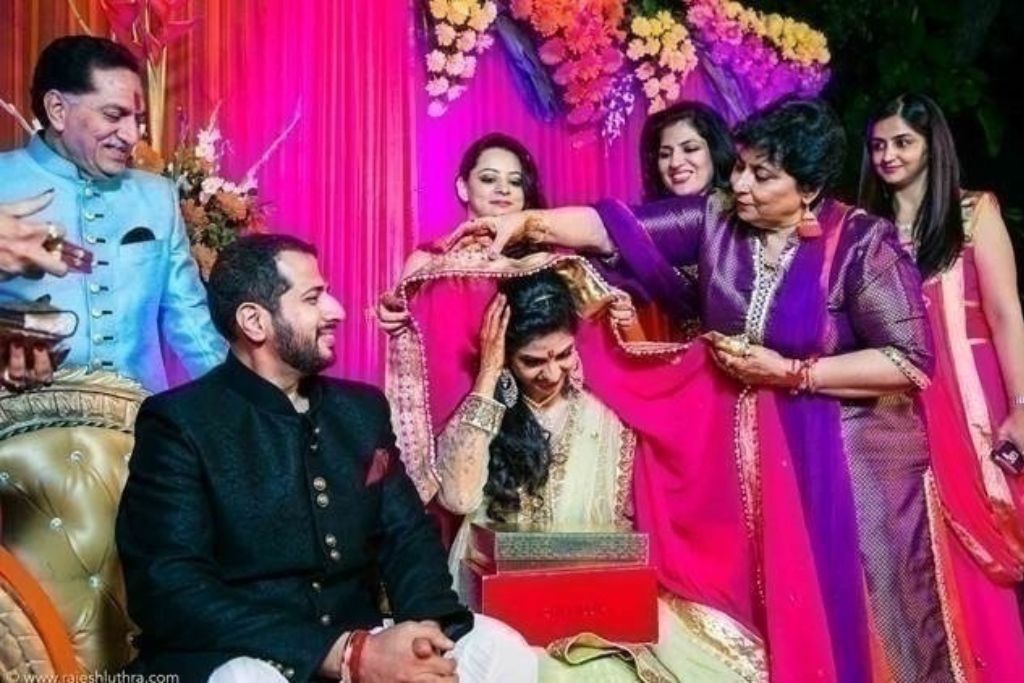
When all aspects of the marriage look good, the bride’s family offers the groom their blessing, accompanied by several gifts for the whole family, such as sweets, chocolates, clothes, and money (which is often called Shagun). The custom performed is known as R.ka. The bride’s presence is not necessary for Roka. The Groom’s family reverts the gesture by visiting the bride’s residence on a separate day, carrying gift hampers. This return ceremony is called Thaka. These ceremonies mark the involvement of close family members only. The relationship between the two families develops by organizing a small pooja called Ardaas.
2. Sagai
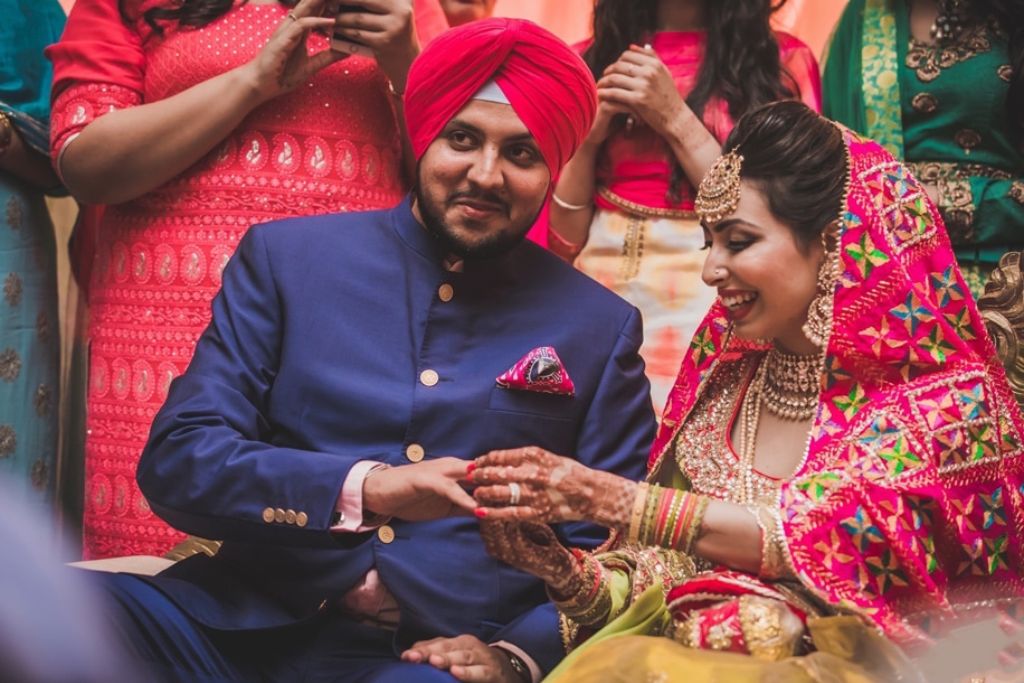
This ceremony witnesses the official engagement between the couple. This is embarked upon as a grand ceremony and usually precedes the wedding by one or two months. Family members and friends from both sides of the family gather to be a part of the couple’s new journey. The bride is provided with boiled rice and milk to eat by the groom’s family. Amongst the celebratory mood, the couple exchanges their rings.
3. Shagun and Chunni Chadai
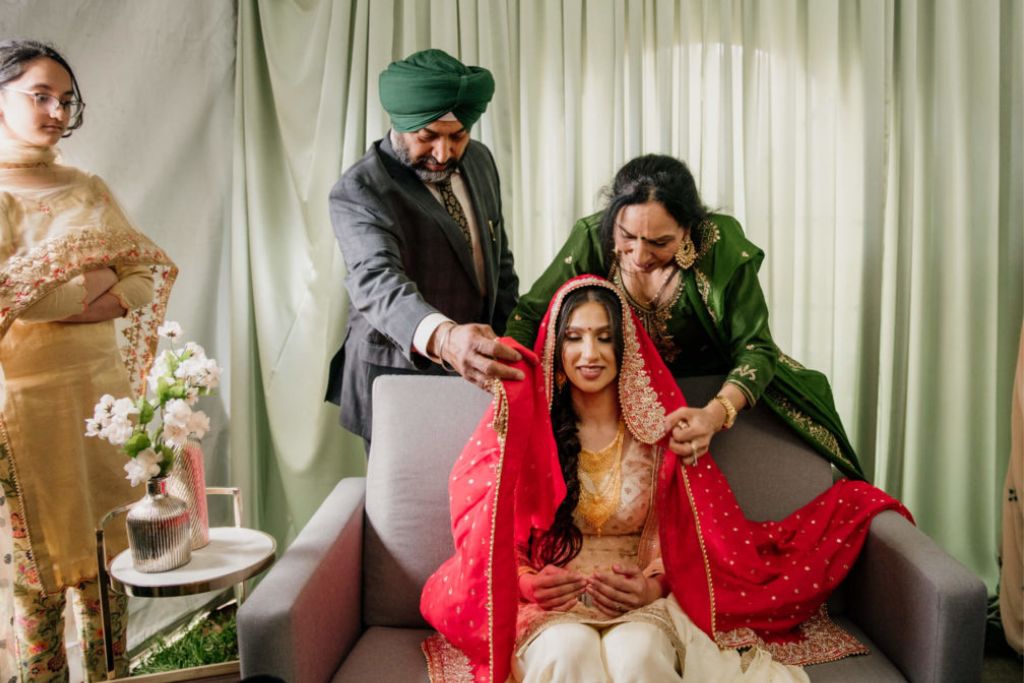
The chunni ceremony is performed to mark the welcome of a new bride into the groom’s family. On the day of sagai or before, a group of ladies visits the bride’s home carrying some outfits which she has to wear at the function. They also bring sweets, mawa, gifts, and special parts of the ritual, i.e., headscarf or Chunni. The chunni is placed in such a way that it covers the bride’s head and face like a veil. The ceremony performed is called Chunni Chadhana. The ceremony continues by gifting the bride jewelry, bangles, or necklaces that the family has inherited over many years. A little henna is applied to the bride’s palm to make the ceremony auspicious. The gifts offered to the bride are popularly known as Shagun.
4. Sangeet
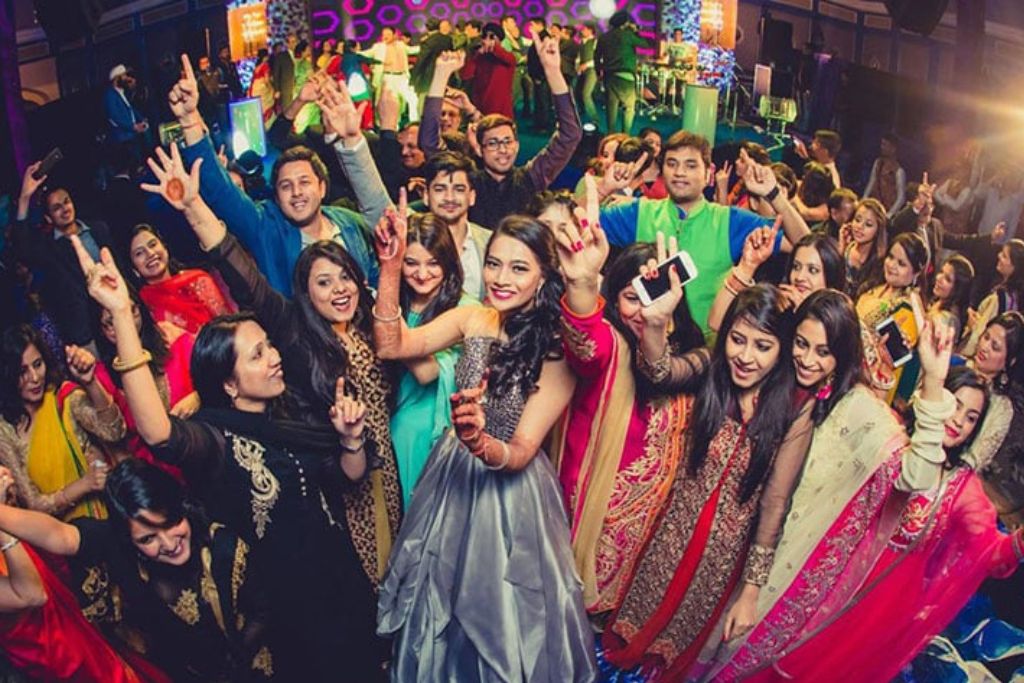
The ladies’ Sangeet is a musical event organized by the bride’s family. Traditionally,y this event took place differently. The ladies of the family gathered and performed the functions surrounding the bride. They make merry by singing traditional Punjabi folk wedding songs, dancing, and teasing the bride. The groom’s family members are also invited to the ceremony. Nowadays, Sangeet is viewed as a gala event where both families gather to enjoy the musical, fun-filled evening. Family members from both sides perform choreographed dances. It is a great opportunity for the families to get familiar with each other.
5. Mehendi
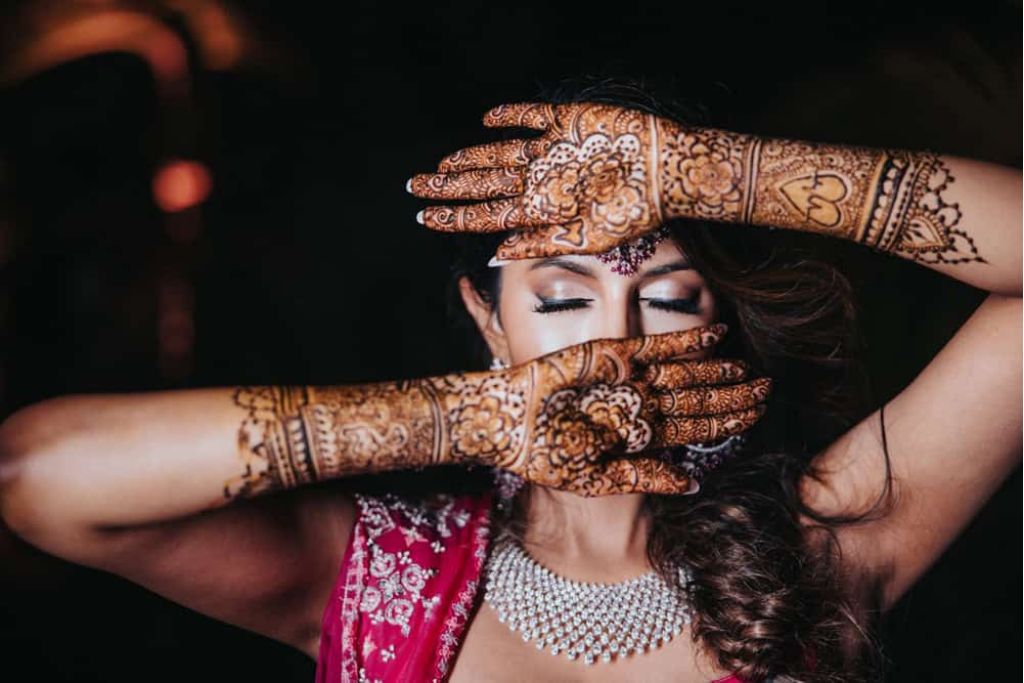
Mehendi ceremony is one of the key rituals of the Punjabi wedding. The bride sits on a well-decorated tool surrounded by her close friends, and the intricate and exclusive patterns of henna paste are applied to her palm and feet, where the groom’s initials are hidden. It is believed that the darker the color of the Mehendi, the more love a bride will get from her in-laws. The Mehendi ceremony is also performed at the groom’s place in a similar way, but with a smaller gathering.
6. Jago
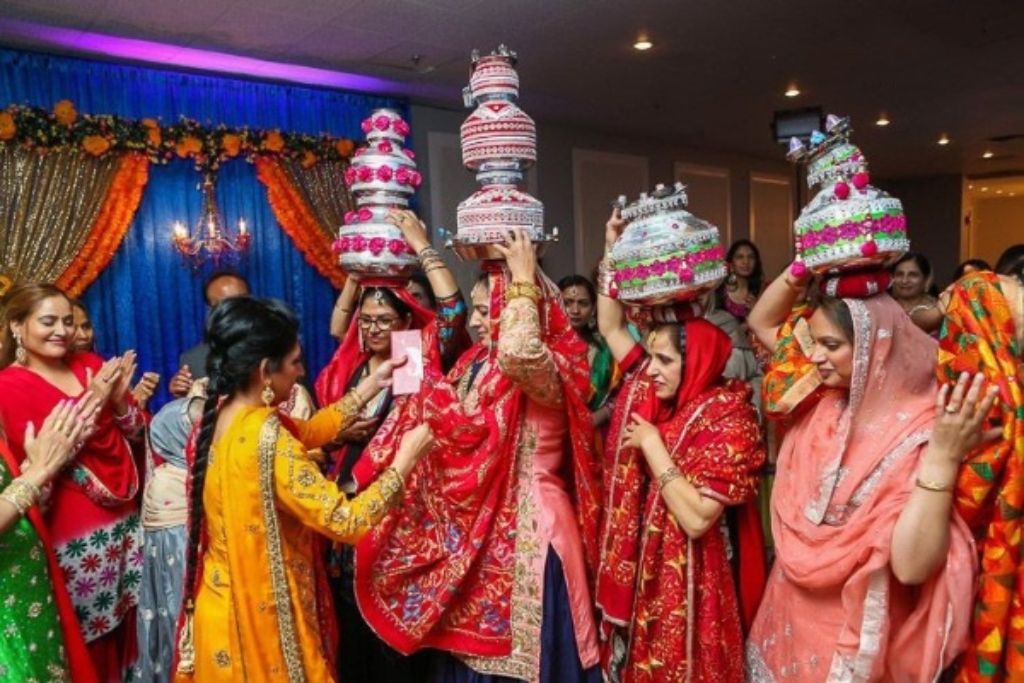
One night before the wedding, the family stays up all night and celebrates till the wee hours of the morning. The ceremony performed is called Jago. In the ceremony, a copper ‘khada’ is crafted with clay lamps. The ‘mami’ of the bride carries the ‘khada’ above her head while the other lady tries to shake it with a long stick with bells on it. The ladies visit relatives’ houses along with dancing and singing, who offer them sweets to eat.
7. Gana Bandhan
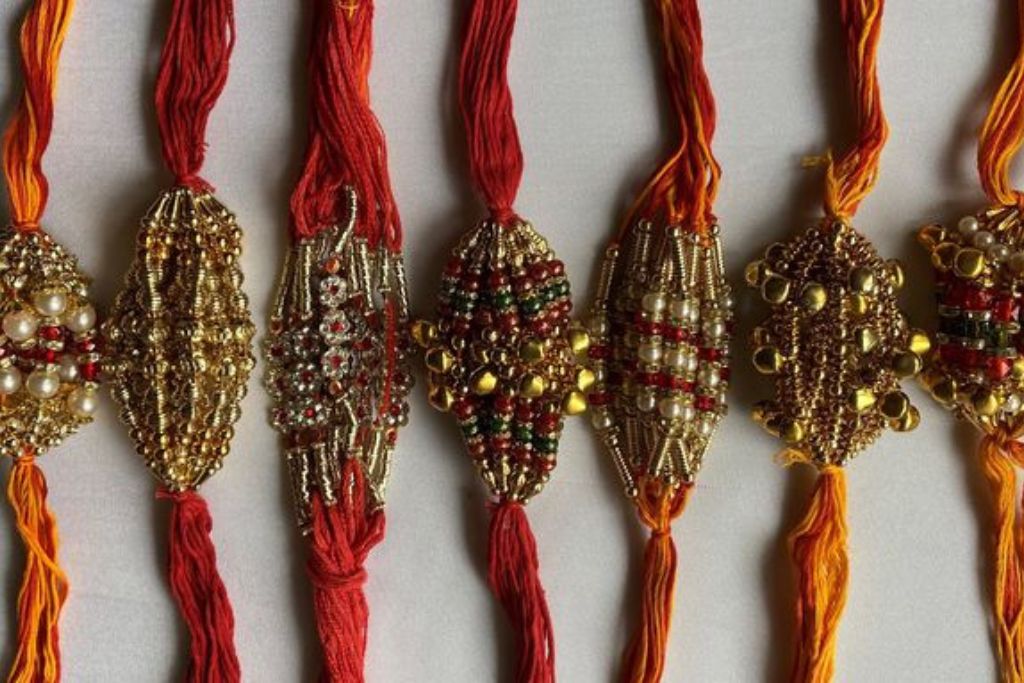
On the morning of the wedding day, the bride and groom attend pa uja at their respective homes. After completing the puja, the pandit ties a mouli (sacred thread) to their wrists. It is tied around a betel nut multiple times to make it complex to untie later.
8. Chooda Chadana
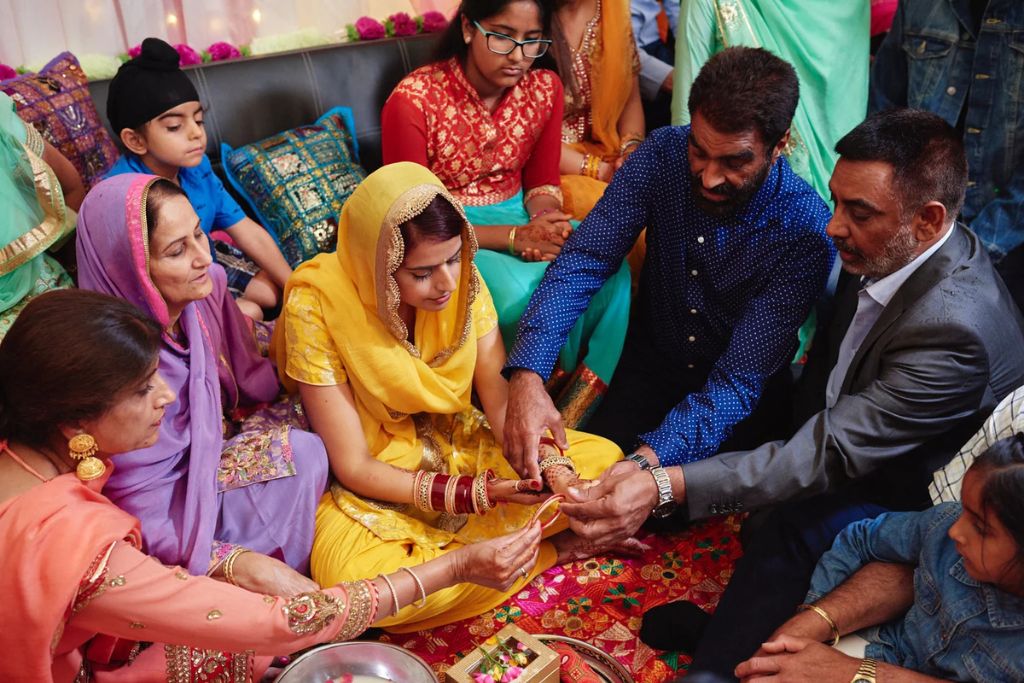
Chooda refers to a set of 21 beautiful red bangles that is offered to the bride at the ceremony. The bride’s mama has a major role to play in the ceremony. He has to attend a havan where chooda is purified with milk and rose petals. The bride’s face is covered with a cloth as she is not allowed to see the chooda until the arrival of the wedding day. The mama and mami of the bride, then the chooda is placed on the bride’s hand in the presence of elderly members. The bridal lehenga is also gifted to the bride by her maternal uncle at this auspicious ceremony. The sisters of the bride and groom then tie a kalire around the bride’s wrist that is enfolded with dried betel nuts.
9. Haldi
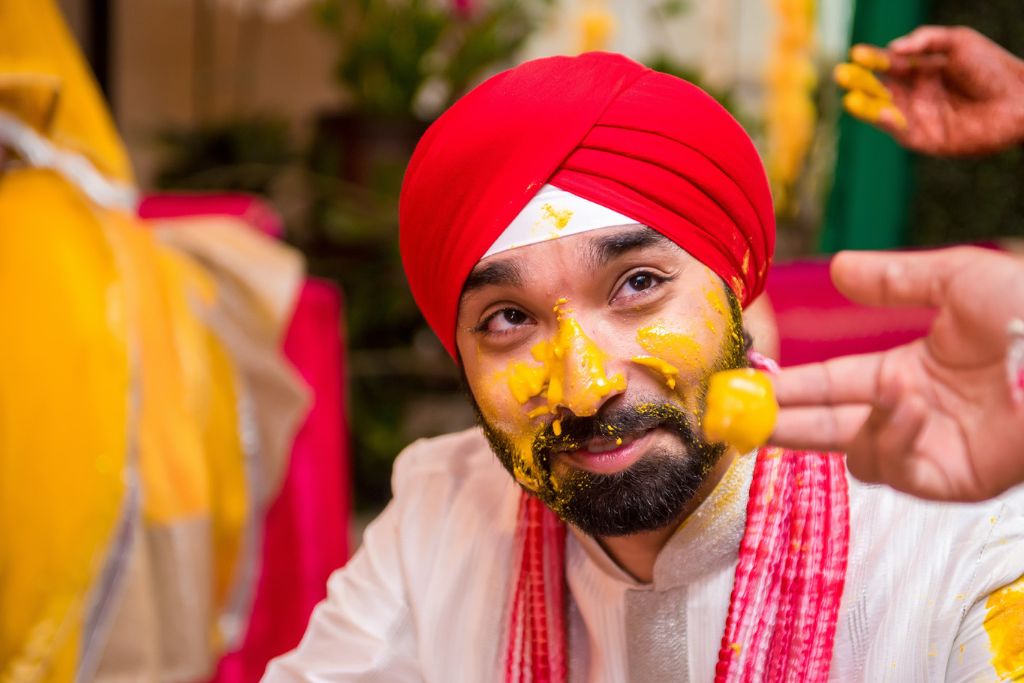
On the occasion of the wedding Haldi, the bride sits on a wooden stool facing four diyas. A Haldi paste is prepared, which consists of turmeric powder, sandalwood, rosewater, and mustard oil. Then, the prepared paste is applied to the whole body of the bride, especially on the face, hands, and feet. It is believed by elderly people that the dazzling light from the diyas imparts an eternal glow on the bride’s face.
10. Ghara Gharoli
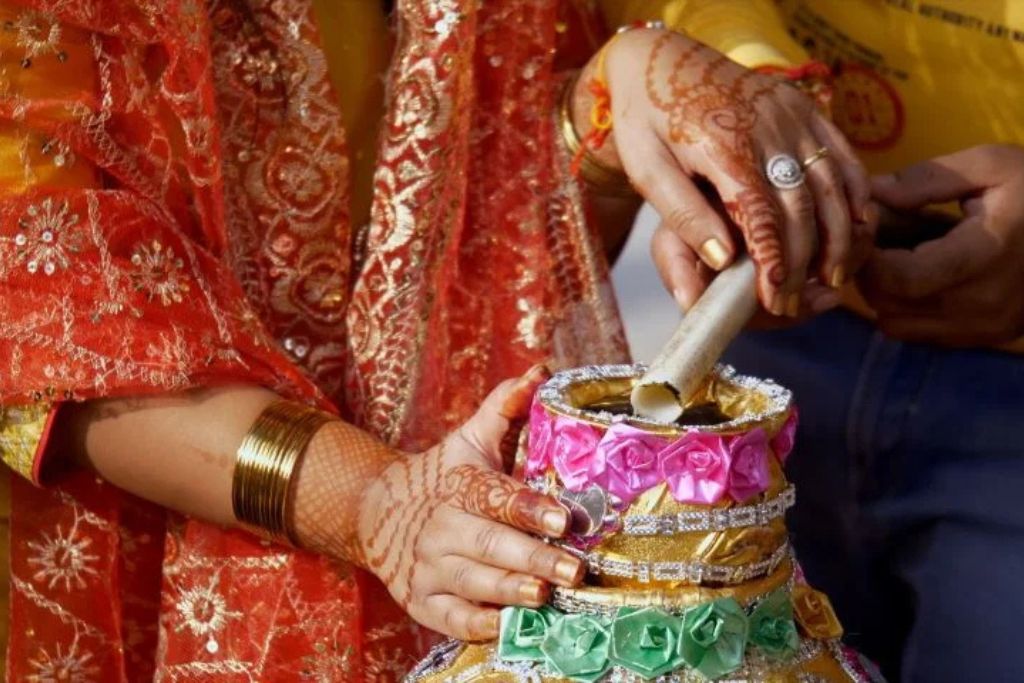
After completing the wedding Haldi ceremony, the paste is removed from the bride’s face, and the bride is then taken to the temple, where she is blessed with holy water. She then prays to the deity, asking for a blessing. The ritual performed is called Ghara Gharoli. A similar ritual is performed at the groom’s place.
11. Sehrabandi and Varna
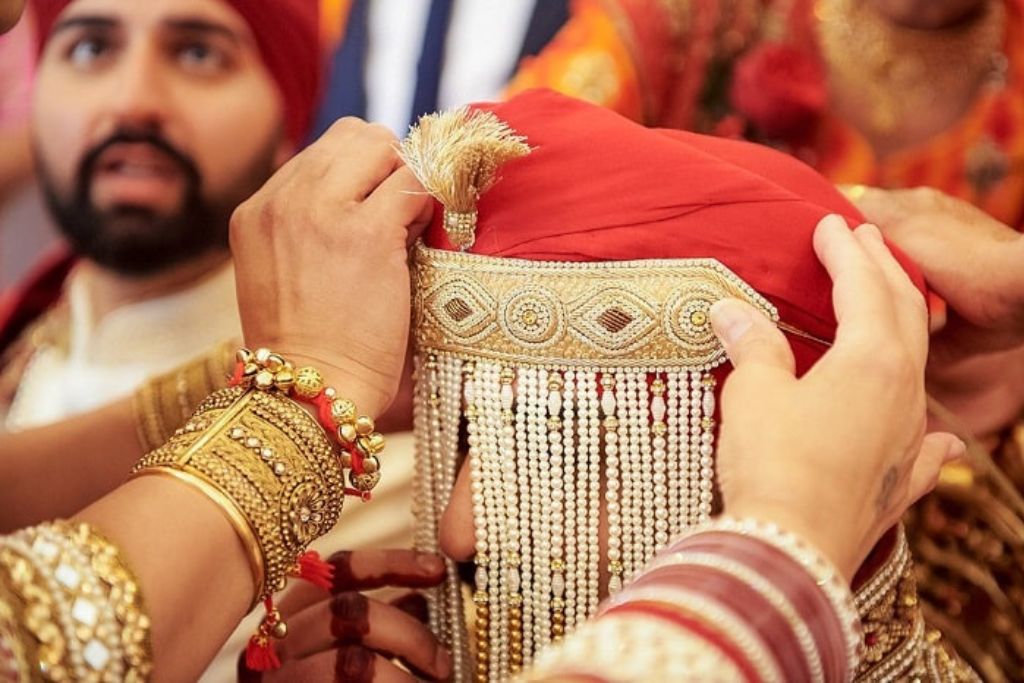
In this ceremony, the groom dresses up in his wedding attire, which includes a sherwani and churidar. A small puja takes place in his honor, during which the sehra is purified by the pandit. Then, it is tied around the groom’s head by an elderly member of the family.
12. Ghodi Chadna
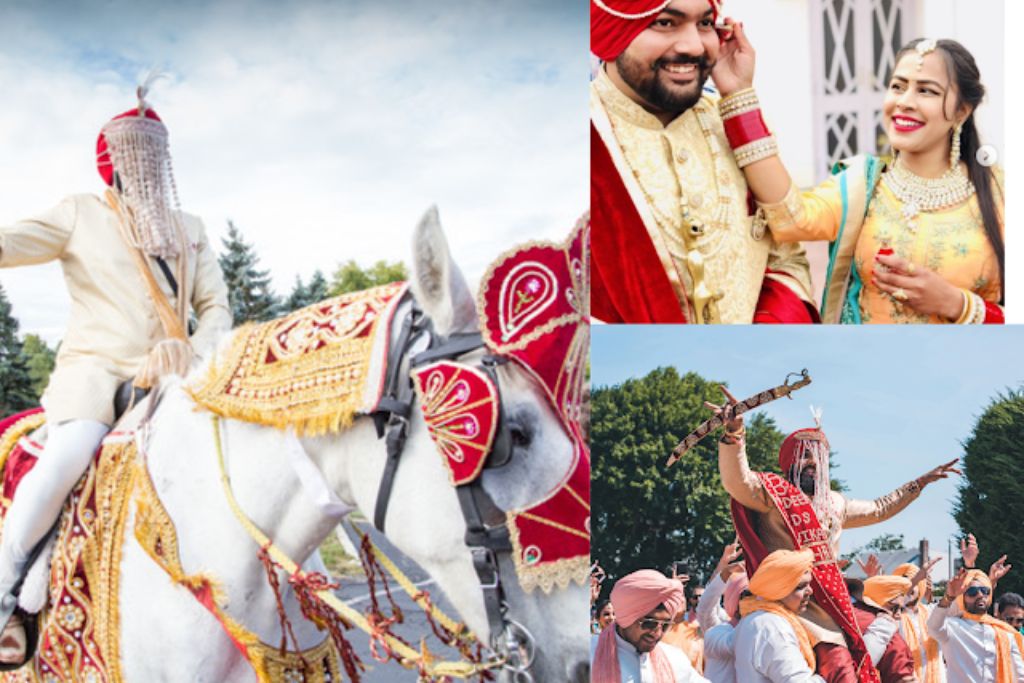
In the ceremony, the groom sets off for the wedding venue by riding a horse. The horse is decorated well, and a tika is applied on its head, and it is fed chana dal by the ladies of the groom’s family. The Surma is applied to the groom’s eyes by his sister-in-law to protect him from evil eyes. He then mounts a horse, continuing the ceremony, accompanied by the family members and wedding band.
13. Varmala
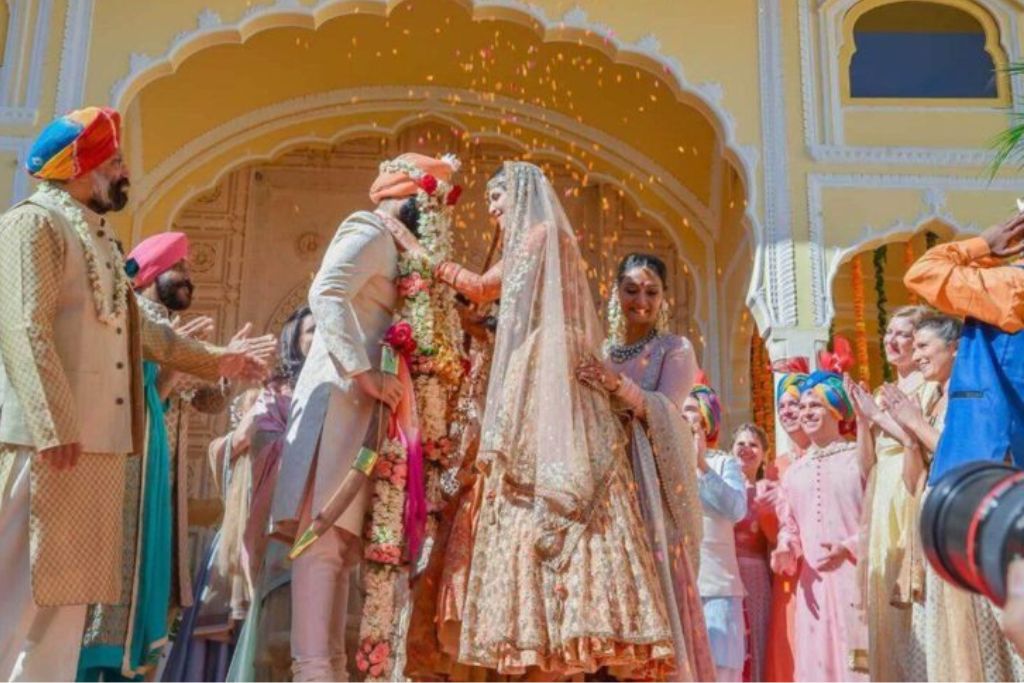
Upon entering the wedding venue, the groom is directed towards the stage and made to stand upon the small pedestal. At an auspicious muhurta, the bride enters the stage and the couple exchange garlands. The ceremony performed is called varmala, which is filled with great fun.
14. Madhupark
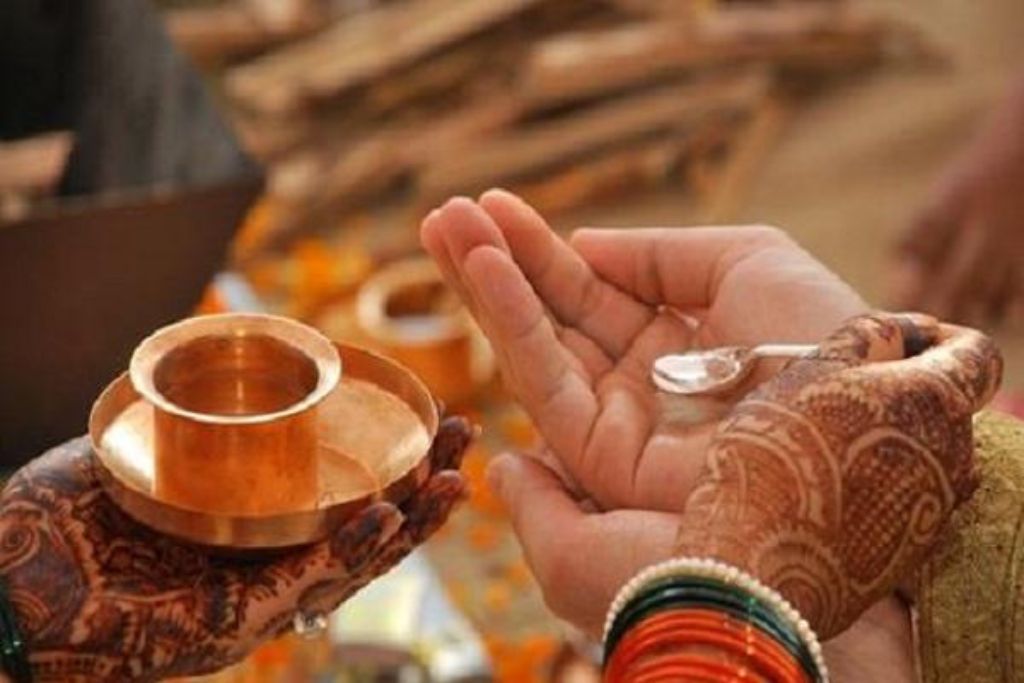
After exchanging garlands, the couple proceeds to the mandap, where the groom is offered a bowl of water to drink. He is also offered special sweets made up of milk, honey, curd, ghee, and other sacred essences. This dish is popularly known as Madhupark.
15. Kanyadaan
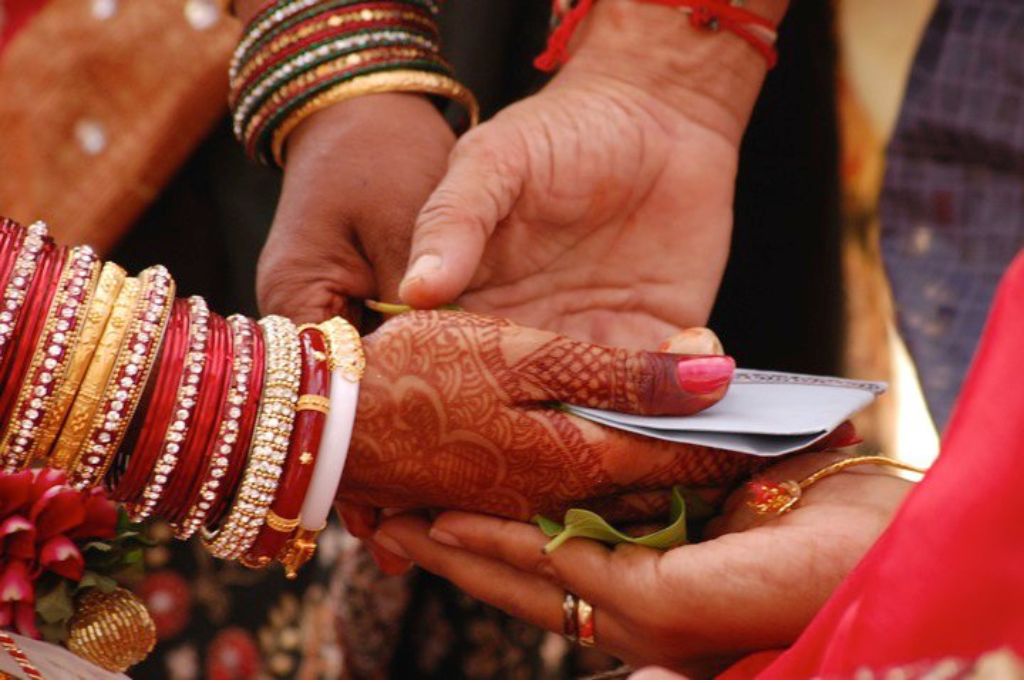
This is one of the old Vedic wedding rituals, where the bride is given away to the groom by her parents. Through the Vedic mantra chanted by a pandit, the bride’s father requests the groom to take good care of his daughter, and the groom accepts the bride’s hand, promising him that he will give her all love and care. The rituals are performed in the presence of a fire deity, ty, who is the prime witness of a wedding
16. Phere
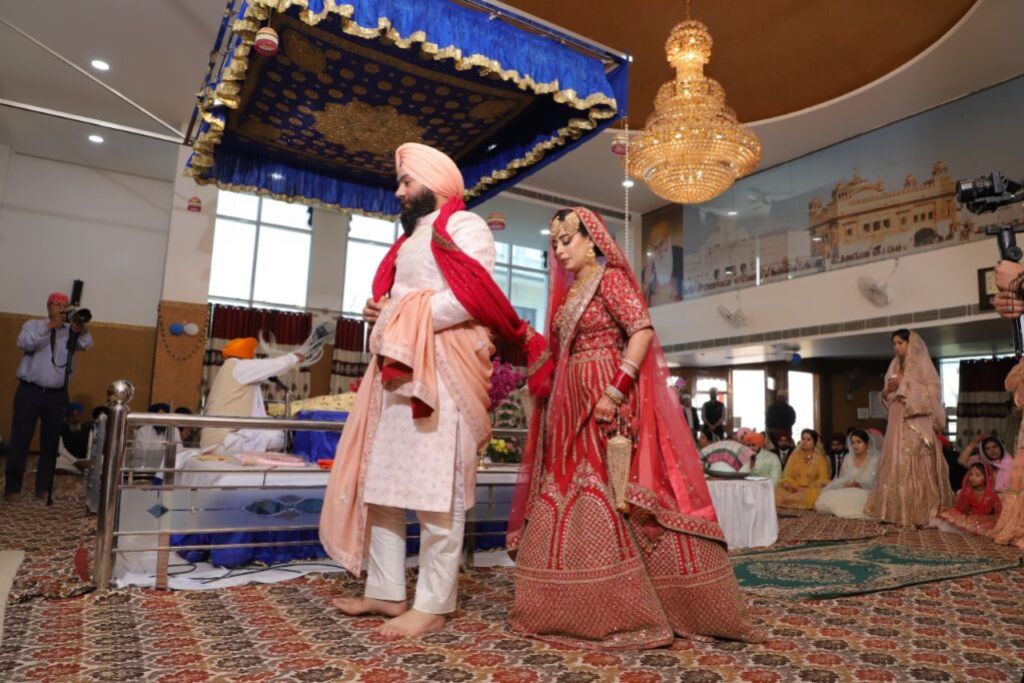
In the next phase of the Punjabi wedding rituals, the couple stands up, and the knot of their dupattas is tied together. They complete this ceremony by encircling the sacred fire four times. For the first three phera bride precedes the groom in the final phera, she follows the groom.
17. Sindoor Daan
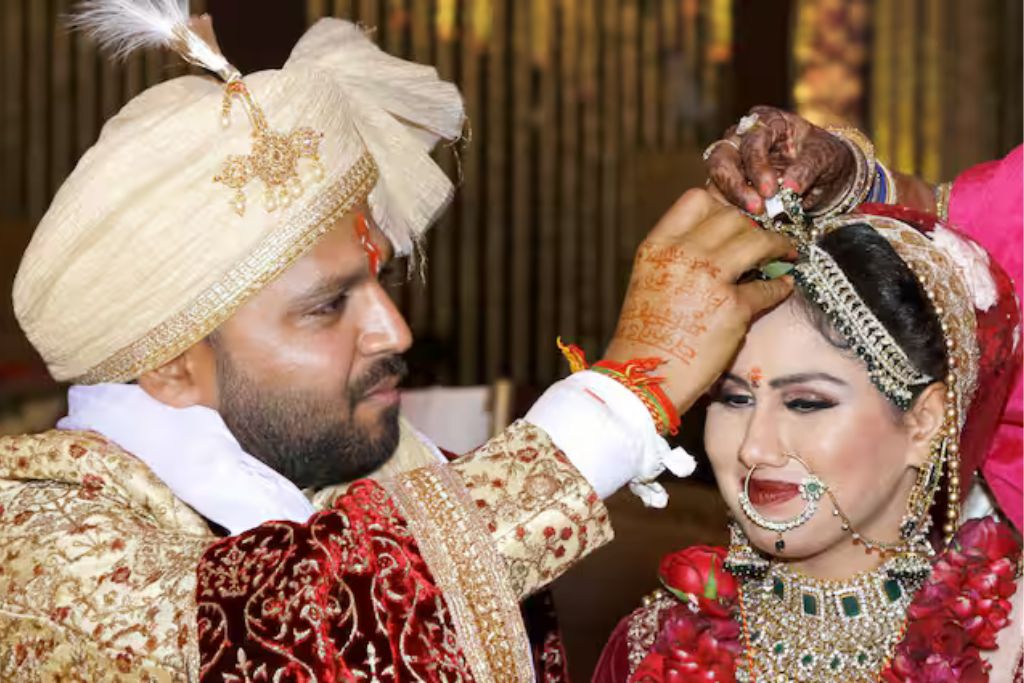
Performing this wedding ritual is itself an emotional touch, where the groom applies sindoor to the parted hair of the bride and also ties a mangal sutra around her neck, accompanied by the mantras chanted by the priest.
18. Vidaai
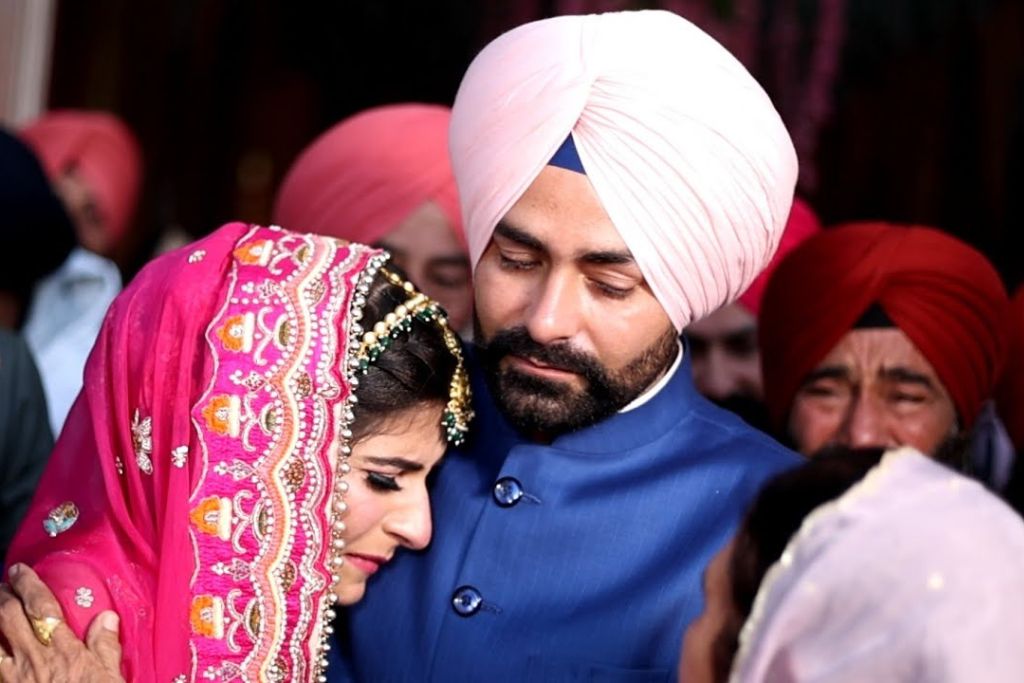
This is the most emotional wedding ritual of the Punjabi wedding ceremony, where the bride says goodbye to her family with teary eyes and throws rice from both of her hands in her family’s direction. This way, she thanked her family members for taking care of her for decades. Then she is sent to her husband’s home in a car decorated with flower petals. This procession of the bride sent away is called Viddai.
FAQs About Punjabi Wedding Rituals
What happens before a Punjabi wedding?
There are a number of events prior to the actual wedding itself. Pre-wedding events may include, but are not limited to, Roka, Engagement, Shagun, Chunni Chadai. When it comes to family gatherings before the ceremony, Sangeet and Mehendi events include music, dance, and henna, and Jago is a big family event after intermission.
What does the wedding day look like?
The wedding day starts with the Chooda and Gana Bandhan, followed by the groom’s baraat. The wedding finishes with the Varmala, Phere, Sindoor Daan, and Vidaai – all filled with love, blessings, and family emotions.
How far in advance are these rituals held?
The Roka and engagement happen weeks or months in advance, followed by Mehendi, Sangeet, and Jago in the days leading up to the wedding day. The wedding ceremony is on the wedding day.
Are all of these ritual events compulsory?
No. In families, there is a possibility they may not decide to do all the events or may simply want to follow certain traditions, or people may want to combine some events or make simplified events, while keeping the cultural spirit of celebration alive.
Why is the importance of rituals?
Different and/or the same rituals mean different things (e.g., Haldi signifies blessings from the family; Chooda signifies new beginnings; Phera signifies a lifelong commitment under the gaze of the family).
Can we modernize the rituals?
Yes. Many couples who are still interested in cultural traditions have modernized the events as their weddings have blended with modern culture or family culture: themed Sangeets, smaller celebrations, or destination weddings still have an opportunity to make the rituals significant to them.
Do you have any advice on planning the rituals?
Identify what ceremonies are most important and create a calendar based on the ceremonies, then select decor, music, and attire for each celebration while having fun.
How many guests should there be?
It really depends. Some rituals like Roka or Haldi can be very intimate, whereas Sangeet and the wedding day are larger-scale celebrations- at the end of the day, it should be about enjoyment and coming together.
Do rituals change from Punjabi family to family?
Yes, a little. The foundational traditions remain, but families often have their own little quirks; therefore, every wedding always seems special and personal.
How can a wedding planner help?
The wedding planner will organize every little detail, from decor to music, timing, and logistics, so that the couple can feel relaxed and enjoy their celebrations.






